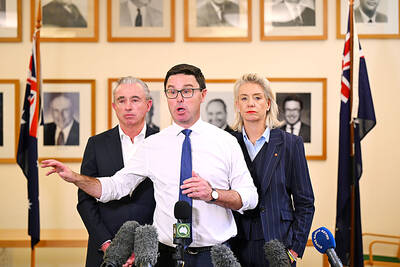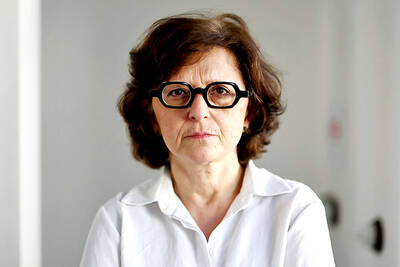The guardians of the world’s most important standards of weights and measures have turned to the weird universe of quantum physics to try to resolve a dilemma.
To the bafflement of scientists, a cylinder of metal sitting in a closely guarded strongbox that is the global benchmark for the kilogram is changing mass.
The enigma doesn’t affect anyone who wants to buy 500mg tablets of aspirin, 0.5kg of carrots or a 50,000-tonne cruise ship.
However, it poses a hefty theoretical challenge to physicists and complicates the work of laboratories that need ultra-precise, always-standard measurement.
Since 1889, the kilogram has been internationally defined in accordance with a piece of metal kept at the International Bureau of Weights and Measures (known by its French acronym of BIPM), in the Paris suburb of Sevres.
Ninety-percent platinum and 10-percent iridium, the British-made cylinder was proudly deemed at its founding to be as inalienable as the stars in the sky.
It is kept under three glass cases in a safe in a protected building, the Pavillon de Breteuil.
In 1992 came a shock: The famous kilo was no longer what it should be.
Measurements made over a century showed that the prototype had changed by about 50 micrograms — the equivalent of a tiny grain of sand 0.4mm in diameter — compared with six other kilos also stored in Sevres.
“Actually, we’re not sure whether it lost mass or gained it,” said Alain Picard, director of the BIPM’s Mass Department. “The change may be to due to surface effects, loss of gas from the metal or a buildup of contaminant.”
The skinnier (or fatter) kilogram marker became more than a scientific curiosity.
It is a bedrock of the International System of Units (SI), the world’s most widely used system of measurement units for daily life, precision engineering, science and trade. The SI has seven “base units” — the kilo, meter, second, ampere, kelvin, mole and candela — from which all other units are derived.
However, unlike its counterparts, the kilo is the last unit that is still defined by a material object.
There used to be a platinum ruler that was the world’s standard meter until its role was replaced by a fundamental constant, the time that light takes to travel 100cm. The metal meter still resides in Sevres, but as a museum piece.
Moving at a pace best described as ponderous, the masters of the SI have now decided to phase out the kilo cylinder.
If all goes well, it will be replaced by a fixed value based on the Planck Constant, named after Max Planck, the granddaddy of quantum physics, who discovered it in 1899.
The Planck Constant, which uses the letter “h” in equations, corresponds to the smallest packet of energy, or quanta, that two particles can exchange.
On Oct. 21, the General Conference on Weights and Measures (CGPM) agreed to use the constant to calculate the value of the kilo.
However, adopting this “will not be before 2014,” after experiments to assess the accuracy of measurement techniques to ensure accuracy to within 20 parts per billion.
If the Planck Constant is adopted, nothing in everyday life will change. The kilo will still be a kilo.
“However, the changes will have immediate impact in the excruciatingly accurate measurements carried out by highly specialized laboratories,” the conference said in a press release.

BACKLASH: The National Party quit its decades-long partnership with the Liberal Party after their election loss to center-left Labor, which won a historic third term Australia’s National Party has split from its conservative coalition partner of more than 60 years, the Liberal Party, citing policy differences over renewable energy and after a resounding loss at a national election this month. “Its time to have a break,” Nationals leader David Littleproud told reporters yesterday. The split shows the pressure on Australia’s conservative parties after Prime Minister Anthony Albanese’s center-left Labor party won a historic second term in the May 3 election, powered by a voter backlash against US President Donald Trump’s policies. Under the long-standing partnership in state and federal politics, the Liberal and National coalition had shared power

CONTROVERSY: During the performance of Israel’s entrant Yuval Raphael’s song ‘New Day Will Rise,’ loud whistles were heard and two people tried to get on stage Austria’s JJ yesterday won the Eurovision Song Contest, with his operatic song Wasted Love triumphing at the world’s biggest live music television event. After votes from national juries around Europe and viewers from across the continent and beyond, JJ gave Austria its first victory since bearded drag performer Conchita Wurst’s 2014 triumph. After the nail-biting drama as the votes were revealed running into yesterday morning, Austria finished with 436 points, ahead of Israel — whose participation drew protests — on 357 and Estonia on 356. “Thank you to you, Europe, for making my dreams come true,” 24-year-old countertenor JJ, whose

A documentary whose main subject, 25-year-old photojournalist Fatima Hassouna, was killed in an Israeli airstrike in Gaza weeks before it premiered at Cannes stunned viewers into silence at the festival on Thursday. As the cinema lights came back on, filmmaker Sepideh Farsi held up an image of the young Palestinian woman killed with younger siblings on April 16, and encouraged the audience to stand up and clap to pay tribute. “To kill a child, to kill a photographer is unacceptable,” Farsi said. “There are still children to save. It must be done fast,” the exiled Iranian filmmaker added. With Israel

Africa has established the continent’s first space agency to boost Earth observation and data sharing at a time when a more hostile global context is limiting the availability of climate and weather information. The African Space Agency opened its doors last month under the umbrella of the African Union and is headquartered in Cairo. The new organization, which is still being set up and hiring people in key positions, is to coordinate existing national space programs. It aims to improve the continent’s space infrastructure by launching satellites, setting up weather stations and making sure data can be shared across